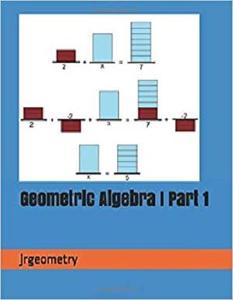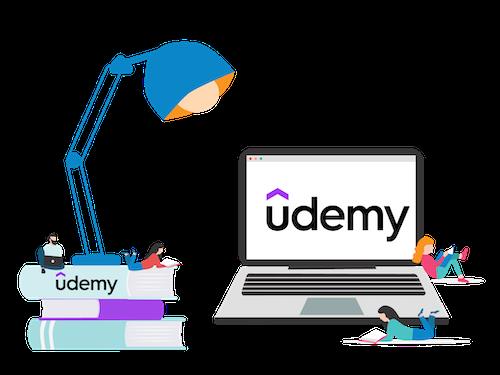Applied Mathematics-Linear Inequalities & Linear Programming
"softddl.org"
1-05-2022, 13:15
-
Share on social networks:
-
Download for free: Applied
-

Published 04/2022
MP4 | Video: h264, 1280x720 | Audio: AAC, 44.1 KHz, 2 Ch
Genre: eLearning | Language: English + srt | Duration: 16 lectures (2h 53m) | Size: 2.1 GB

Published 04/2022
MP4 | Video: h264, 1280x720 | Audio: AAC, 44.1 KHz, 2 Ch
Genre: eLearning | Language: English + srt | Duration: 16 lectures (2h 53m) | Size: 2.1 GB
IIT-JEE Main & Advanced | BITSAT | SAT | MSAT | MCAT | State Board | CBSE | ICSE | IGCSE
What you'll learn
Introduction
Inequalities
Algebraic Solutions of Linear Inequalities in One Variable and their Graphical Representation
Graphical Solution of Linear Inequalities in Two Variables
Solution of System of Linear Inequalities in Two Variables
Linear Programming Problem and its Mathematical Formulation
Mathematical formulation of the problem
Different Types of Linear Programming Problems
Requirements
Basic knowledge of mathematics of 9th and 10th std Mathematics
Description
Linear Inequalities
Linear inequalities
Algebraic solutions of linear inequalities in one variable and their representation on the number line
Graphical solution of linear inequalities in two variables
Graphical solution of system of linear inequalities in two variables
Linear Programming
Introduction
Related terminology such as −
Constraints
Objective function
Optimization
Different types of linear programming (L.P.) Problems
Mathematical formulation of L.P. Problems
Graphical method of solution for problems in two variables
Feasible and infeasible regions (bounded and unbounded)
Feasible and infeasible solutions
Optimal feasible solutions (up to three non-trivial constraints)
SUMMARY FOR LINEAR INEQUALITIES
1. Two real numbers or two algebraic expressions related by the symbols <, >, ≤ or ≥ form an inequality.
2. Equal numbers may be added to (or subtracted from ) both sides of an inequality.
3. Both sides of an inequality can be multiplied (or divided ) by the same positive number. But when both sides are multiplied (or divided) by a negative number, then the inequality is reversed.
4. The values of x, which make an inequality a true statement, are called solutions of the inequality.
5. To represent x < a (or x > a) on a number line, put a circle on the number a and dark line to the left (or right) of the number a.
6. To represent x ≤ a (or x ≥ a) on a number line, put a dark circle on the number a and dark the line to the left (or right) of the number x.
7. If an inequality is having ≤ or ≥ symbol, then the points on the line are also included in the solutions of the inequality and the graph of the inequality lies left (below) or right (above) of the graph of the equality represented by dark line that satisfies an arbitrary point in that part.
8. If an inequality is having < or > symbol, then the points on the line are not included in the solutions of the inequality and the graph of the inequality lies to the left (below) or right (above) of the graph of the corresponding equality represented by dotted line that satisfies an arbitrary point in that part.
9. The solution region of a system of inequalities is the region which satisfies all the given inequalities in the system simultaneously.
SUMMARY FOR LINEAR PROGRAMMING
1. A linear programming problem is one that is concerned with finding the optimal value (maximum or minimum) of a linear function of several variables (called objective function) subject to the conditions that the variables are non-negative and satisfy a set of linear inequalities (called linear constraints). Variables are sometimes called decision variables and are non-negative.
2. A few important linear programming problems are: (i) Diet problems (ii) Manufacturing problems (iii) Transportation problems.
3. The common region determined by all the constraints including the non-negative constraints x ≥ 0, y ≥ 0 of a linear programming problem is called the feasible region (or solution region) for the problem.
4. Points within and on the boundary of the feasible region represent feasible solutions of the constraints. Any point outside the feasible region is an infeasible solution.
5. Any point in the feasible region that gives the optimal value (maximum or minimum) of the objective function is called an optimal solution.
6. The following Theorems are fundamental in solving linear programming problems
Theorem 1 Let R be the feasible region (convex polygon) for a linear programming problem and let Z = ax + by be the objective function. When Z has an optimal value (maximum or minimum), where the variables x and y are subject to constraints described by linear inequalities, this optimal value must occur at a corner point (vertex) of the feasible region.
Theorem 2 Let R be the feasible region for a linear programming problem, and let Z = ax + by be the objective function. If R is bounded, then the objective function Z has both a maximum and a minimum value on R and each of these occurs at a corner point (vertex) of R.
7. If the feasible region is unbounded, then a maximum or a minimum may not exist. However, if it exists, it must occur at a corner point of R.
8. Corner point method for solving a linear programming problem. The method comprises of the following steps
(i) Find the feasible region of the linear programming problem and determine its corner points (vertices).
(ii) Evaluate the objective function Z = ax + by at each corner point. Let M and m respectively be the largest and smallest values at these points.
(iii) If the feasible region is bounded, M and m respectively are the maximum and minimum values of the objective function.
If the feasible region is unbounded, then
(i) M is the maximum value of the objective function, if the open half plane determined by ax + by > M has no point in common with the feasible region. Otherwise, the objective function has no maximum value.
(ii) m is the minimum value of the objective function, if the open half plane determined by ax + by < m has no point in common with the feasible region. Otherwise, the objective function has no minimum value.
9. If two corner points of the feasible region are both optimal solutions of the same type, i.e., both produce the same maximum or minimum, then any point on the line segment joining these two points is also an optimal solution of the same type.
Who this course is for
Complete Mathematics for Engineering Entrance Exam Preparation. ( IIT-JEE Main | Advanced | BITSAT | SAT | etc.)
State Board | CBSE | ICSE | IGCSE | Course for High School & College
Courses are suitable for students from over 160 countries from Europe, America, Middle East, Asia, Africa and APAC. Notably England, Germany, France, Sweden, Ireland, Scotland, USA, Canada, UAE, Saudi, Qatar, Kuwait, Malaysia, Indonesia, Myanmar, Newzealand, Australia, South Africa, South Korea, Nigeria, Nepal, Sri Lanka, etc
Homepage
https://www.udemy.com/course/applied-mathematics-linear-inequalities-linear-programming/https://hot4share.com/1rvwdgdoul3i/4juta.Applied.MathematicsLinear.Inequalities..Linear.Programming.part1.rar.html
https://hot4share.com/gujhgpk4q64o/4juta.Applied.MathematicsLinear.Inequalities..Linear.Programming.part2.rar.html
https://hot4share.com/y0m34du1m6f6/4juta.Applied.MathematicsLinear.Inequalities..Linear.Programming.part3.rar.html

https://uploadgig.com/file/download/7dDB178fd9172E8E/4juta.Applied.MathematicsLinear.Inequalities..Linear.Programming.part1.rar
https://uploadgig.com/file/download/aEbC35c682366711/4juta.Applied.MathematicsLinear.Inequalities..Linear.Programming.part2.rar
https://uploadgig.com/file/download/C30660Fcc9d8cc54/4juta.Applied.MathematicsLinear.Inequalities..Linear.Programming.part3.rar

https://rapidgator.net/file/9824f5e317163db122810f7dfae1d496/4juta.Applied.MathematicsLinear.Inequalities..Linear.Programming.part1.rar.html
https://rapidgator.net/file/6d7248bf7c05774048a554f321e86a9b/4juta.Applied.MathematicsLinear.Inequalities..Linear.Programming.part2.rar.html
https://rapidgator.net/file/d57bdf5057ccccaea84c5edc854b3ffb/4juta.Applied.MathematicsLinear.Inequalities..Linear.Programming.part3.rar.html

https://nitro.download/view/FEC069B64C92366/4juta.Applied.MathematicsLinear.Inequalities..Linear.Programming.part1.rar
https://nitro.download/view/A6D3D111C552E88/4juta.Applied.MathematicsLinear.Inequalities..Linear.Programming.part2.rar
https://nitro.download/view/D00637AF42AC3C2/4juta.Applied.MathematicsLinear.Inequalities..Linear.Programming.part3.rar
Links are Interchangeable - No Password - Single Extraction
The minimum comment length is 50 characters. comments are moderated





